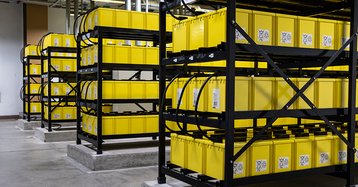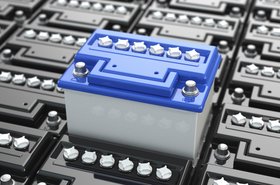Uninterruptible power supplies (UPSs) are rightfully held up as one of the most crucial components in a data center. However, the role of the batteries that support them is often overlooked.
If a power supply fails, its battery must take over instantly and use its stored energy to support the load until either the mains is restored, a generator can be started, or the data center can be shut down safely.
UPS batteries are therefore mission critical to data centers and this article serves to highlight the key issues to consider when selecting battery technology for a UPS.
Pros and cons of UPS battery technologies
Reliability and costs are significant requirements for all data centers. UPS batteries are a major contributor to these priorities, as data center managers demand energy-efficient technology that will ensure business continuity, extend operating life and reduce total cost of ownership (TCO).
Selecting a UPS requires an exploration of the pros and cons of different battery technologies. Which one you choose has a direct impact on TCO, energy efficiency and charging rates. Traditional lead-acid batteries, including versions such as absorbent glass mat (AGM), represent over 90 percent of the UPS market, but there is growing interest in Li-ion technology.
This is because Li-ion batteries offer smaller footprints and excellent fast charging capabilities. In addition, they have low maintenance needs and a long service life. However, they also require specialized charging systems, battery management for safe operation and cannot easily be recycled.
Alternatives to traditional lead-acid and Li-ion batteries are therefore worth considering, such as Thin Plate Pure Lead (TPPL) technology that offers some similar performance benefits to Li-ion - and higher energy efficiency than traditional AGM batteries - but without the some of the challenges.
The rise of Li-ion technology
Growth in the electric motor vehicle market has led to rapid advances in Li-ion battery technology. Li-ion batteries have a high charge acceptance and fast charging capability. This feature is important in regions where mains power suffers frequent interruptions. Li-ion batteries use a Battery Management System (BMS) to control charging in terms of efficiency and safety.
Charging speed, energy efficiency and battery life are all factors that make Li-ion technology attractive for UPS applications. These batteries have low maintenance needs due to the built-in diagnostics of the BMS. Li-ion batteries have a 15 to 20-year design life at 25C, but there is very little proven field experience.
Li-ion batteries are smaller than lead-acid batteries, and they weigh less too. This allows data centers to recover floor space from their UPS and use it for ICT equipment.
The TPPL alternative
TPPL is an advanced form of Lead-Acid battery with benefits over AGM technology. Foremost, TPPL batteries have very good fast charging capabilities. They can be fully recharged within 2 and a half hours depending on the charging current and voltage parameters used.
While AGM batteries have a benchmark life of 5 to 6 years, TPPL alternatives have a design life of more than 12 years. They have been known to achieve 8 to 10 years in service. Although TPPL technology is not as compact as Li-ion, high energy density solutions are possible.
TPPL batteries are high in energy efficiency compared to AGM technology. They achieve a 43 percent reduction in energy by lowering the floating current requirements. These batteries can operate at higher temperatures, which also reduces the energy costs of air conditioning.
Safety, recycling and TCO considerations
Fast charging, low maintenance and long service life are important factors when choosing a UPS battery. But other factors should not be ignored.
- Safety
Li-ion batteries have transport limitations that do not apply to lead-acid technology. TPPL batteries are approved as non-hazardous cargo and can be shipped by ground, sea and air without restrictions. However, class UN3480 Li-ion batteries must be shipped in a partial state of charge (PSoC). They must comply with packing regulations and are restricted to dedicated cargo airlines. - Recycling
Lead-acid batteries have an established commercial recycling path. 95 percent of the battery is recyclable and they have an inherent end of life value. Li-ion batteries are 100 percent recyclable, but they lack a commercial recycling path. Depending on the chemistry, end-users may have to pay for disposal of batteries at the end of their service life. This is sure to change in the future as the Li-ion market continues to grow. - Total cost of ownership
Ultimately TCO is the primary driver for selecting a UPS with its battery technology. The initial investment, maintenance and operating cost and service life all play a role in determining the TCO.
Li-ion batteries are more expensive to purchase. They have a longer design life, but this has yet to be proven in practice. Li-ion and lead-acid batteries have different charging characteristics. Installing a Li-ion UPS solution requires a new charging infrastructure, adding to the initial investment. On the other hand, TPPL uses the same charging architecture as standard Lead-Acid batteries.
Conclusion
The evolution of Li-ion technology in electric motor vehicle applications is creating opportunities for other sectors like data centers. Traditional Lead-Acid, TPPL and Li-ion all have distinct advantages and disadvantages. Users selecting a UPS for their data center should keep the pros and cons of each battery type in front of mind before selecting a UPS solution. Each application has unique requirements and data centers are well-advized to seek expert opinion for their context.






